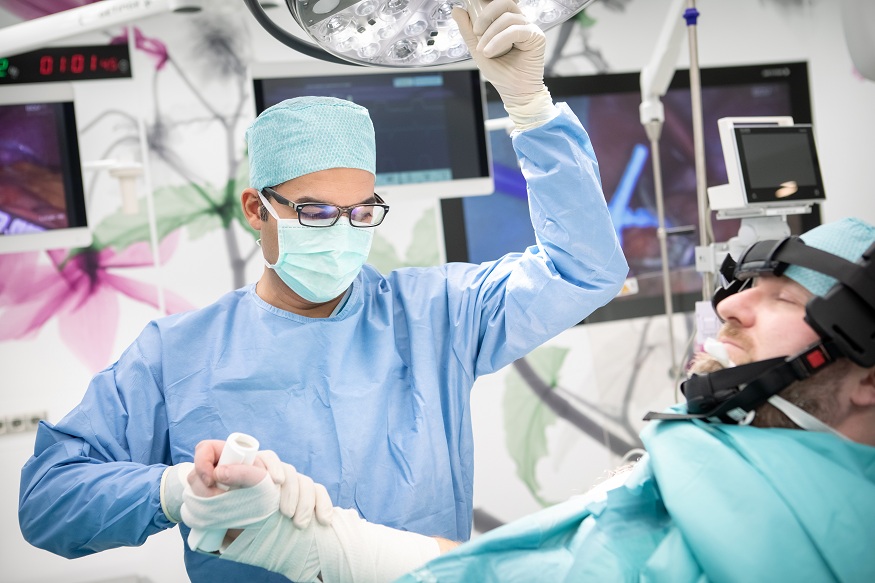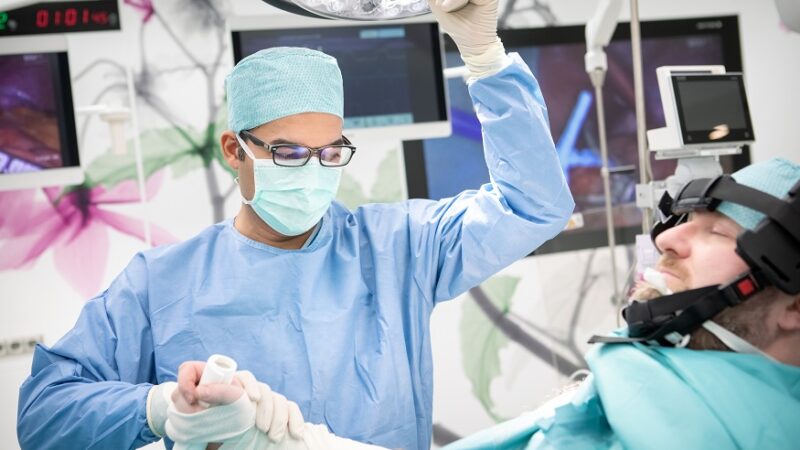Proper spinal alignment plays a central role in both everyday comfort and surgical outcomes. Traditionally, surgical positioning has relied on imaging, manual assessment and surgeon experience. Dr. Larry Davidson, an expert in minimally invasive spine surgery, recognizes that AI-powered posture analysis helps close the gap by capturing how patients move and distribute weight in real-life settings. This added layer of insight supports more accurate surgical planning and positioning, leading to better outcomes and long-term spinal function.
Artificial Intelligence (AI) is now being used to analyze posture in motion, offering deeper insights into spinal misalignment, muscular compensation and mechanical stress. This data is reshaping how clinicians approach preoperative planning, intraoperative positioning and even post-operative care. With posture-specific information guiding surgical strategies, procedures can be performed with greater accuracy, personalized adjustments and better long-term results.
Why Posture Matters in Spine Surgery
Posture affects how the spine supports weight, distributes pressure across discs and joints, and interacts with surrounding muscles and ligaments. In spine surgery, not factoring in a patient’s habitual posture can result in a disconnect between the intended correction and their body’s natural biomechanics.
For example, a spinal fusion that achieves ideal alignment on the operating table might cause discomfort or complications once the patient resumes daily movement if that fusion didn’t account for pre-existing posture habits. AI makes it possible to bridge this gap by analyzing how a patient moves, stands and sits in real life.
How AI Captures and Interprets Posture
AI-powered posture analysis often begins with data from motion sensors, wearable devices, 3D imaging or video capture systems. These tools collect information on spinal curvature, balance, weight distribution and joint angles during real-world activities, such as walking, sitting or bending.
Machine learning models use this data to pinpoint abnormal postural patterns, deviations from spinal neutrality, and compensatory stress areas. The result is a dynamic map of spine function under real-world conditions, something static X-rays or MRIs fail to fully capture. Dr. Larry Davidson explains, “AI will provide us with the ability to have a total and comprehensive understanding of the patient’s medical history and what sort of spinal interventions would be considered as best practices.” With a broader view that connects postural behavior to medical context, surgical planning becomes more personalized and grounded in both movement and clinical needs.
Enhancing Surgical Positioning Precision
One of the most immediate benefits of AI-driven posture analysis is its impact on surgical positioning. During spine surgery, patient placement on the operating table must align the spine to optimize access, minimize risk and mirror the spine’s natural posture under load.
AI-generated posture maps allow surgeons to determine the ideal intraoperative alignment for each patient. For instance, if a patient has a history of anterior pelvic tilt or forward head posture, the surgical team can adjust table positioning and retractor angles accordingly. This ensures that the corrected spinal alignment integrates smoothly into the patient’s existing biomechanics post-op.
Supporting Surgical Planning and Hardware Placement
Beyond positioning, posture analysis informs decisions around surgical approach and implant selection. For example, if AI detects a rotational imbalance or asymmetry in spinal curvature, the surgeon may opt for lateral access or customize rod contouring to match the spine’s natural shape.
In infusion surgeries, pedicle screw angles can be customized to align with the spine’s actual load-bearing direction during daily movements, boosting fusion stability and minimizing hardware complications.
AI can also simulate how different surgical corrections will affect posture and balance, helping the team select the approach that supports overall spine mechanics and patient function.
Improving Outcomes Through Real-World Alignment
AI’s posture analysis isn’t just helpful in the OR; it also supports better long-term outcomes. When surgery restores alignment in a way that matches a patient’s real-world posture, the result is less muscular compensation, improved comfort and a lower risk of adjacent segment degeneration.
Patients are more likely to return to normal activity sooner and report greater satisfaction when the surgical correction “fits” their body’s habitual motion. This alignment between anatomical correction and functional posture leads to better recovery and fewer follow-up procedures.
Monitoring Posture Postoperatively
AI posture analysis doesn’t stop at surgery. Post-operative monitoring can track how the patient’s posture evolves during healing. Wearable posture sensors or smart cameras allow providers to track whether the surgical correction is holding or if compensatory movement patterns are returning.
This allows for timely physical therapy interventions, ergonomic coaching or brace adjustments to reinforce proper alignment. Over time, patients benefit from improved musculoskeletal balance, reduced pain and greater long-term function.
Integrating AI with Rehabilitation
Rehabilitation professionals also use AI-generated posture data to design smarter recovery plans. If the analysis reveals asymmetrical gait or limited range of motion, therapists can prescribe targeted exercises to rebalance the body.
Progress can be tracked through ongoing data collection, with AI identifying improvements or setbacks in real-time. This level of feedback improves adherence, supports motivation and enables more personalized recovery support tailored to how each patient’s posture is evolving daily.
Ethical and Practical Considerations
As with all medical technology, AI posture analysis should supplement, not substitute, clinical expertise. Data should be interpreted in the context of patient history, goals and physical limitations. Ensuring diverse training datasets also helps reduce bias and improve accuracy across different body types and conditions.
Privacy protections are also important, especially when video or wearable monitoring is used. Patients should be informed about how their data is collected, stored and used, ensuring full transparency and trust.
The Future of Posture-Informed Spine Care
As posture analysis tools continue to evolve, their applications in spinal surgery will expand. Future systems may include AI-integrated surgical tables that auto-adjust based on posture scans, real-time intraoperative feedback on alignment accuracy and pre-op simulations that let patients visualize how corrected posture will feel.
We may also see posture tracking integrated into daily wearables, providing continuous updates on spinal alignment long after surgery, transforming recovery into an interactive, responsive experience.
Aligning Technology with the Body
AI-powered posture analysis offers a more sophisticated approach to spine surgery, enhancing every stage, from planning to recovery. By treating posture as an active, evolving element of spinal health, surgeons can offer corrections that are not only anatomically sound but functionally aligned with how patients move in daily life.
As these technologies continue to improve, spine care becomes more responsive to individual needs and better equipped to support lasting recovery. With AI guiding surgical decisions through a better understanding of biomechanics, the path to recovery is becoming smarter, smoother and more sustainable.










